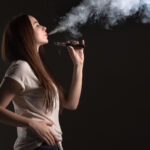
Fast Facts
Study Publication Date: June 3, published in Thorax
Main Findings: Alcohol consumption in a pressurized cabin can lead to poor sleep, cardiovascular stress, and lower blood oxygen levels
Participants: 48 healthy adults aged 18-40
Key Metrics: Drinkers in low-pressure settings had blood oxygen levels of 85% compared to 88% for non-drinkers
Heart Rate: Increased during sleep for drinkers in low-pressure conditions, contrary to normal expectations.
Whether to calm nerves or simply enjoy the flight, many travelers opt for an alcoholic beverage when on a plane. However, new research suggests that combining flying, drinking, and sleeping may be riskier than previously thought.
The Study
A pioneering study published on June 3 in the journal Thorax discovered that sleeping in a pressurized cabin after consuming alcohol can lead to poor sleep quality, cardiovascular stress, and lower blood oxygen levels. Eva-Maria Elmenhorst, MD, the lead author and deputy of the Department of Sleep and Human Factors Research at the German Aerospace Center, shared with Health that participants experienced significant drops in blood oxygen levels “to quite low values for extended durations.”
This could be particularly risky for individuals with underlying conditions such as lung or heart disease. Elmenhorst emphasized that even though healthy people might not face direct harm, it’s still advisable to avoid such blood oxygen desaturations.
Investigating How Flying and Alcohol Affect the Body
To explore the health effects of alcohol consumption on a plane, researchers studied 48 healthy adults aged 18 to 40. Participants were divided into two groups: one drank vodka equivalent to two glasses of wine or two cans of beer, while the other group abstained.
Each group experienced different sleeping environments: one in a sea-level pressure sleep lab and the other in an altitude chamber simulating flight conditions. After two days, the groups switched conditions.
The results showed that both drinkers and non-drinkers had stable blood oxygen levels and heart rates in the normal pressure setting, with drinkers at 95% and non-drinkers at 96% oxygen saturation. Their heart rates were also within normal ranges: 77 bpm for drinkers and 64 bpm for non-drinkers.
However, under low-pressure conditions mimicking an airplane, results were more concerning. Non-drinkers had an average blood oxygen level of 88%, while drinkers had 85%. Normal blood oxygen levels are 95% and above. Instead of the usual decrease in heart rate during sleep, heart rates increased, especially in drinkers.
Cardiovascular Stress and Poor Sleep Quality
Participants in low-pressure conditions who consumed alcohol had worse sleep quality and spent less time in the beneficial rapid eye movement (REM) sleep stage. Their heart rates also did not decrease but increased, with non-drinkers averaging 73 bpm and drinkers 88 bpm during sleep.
For individuals with underlying health conditions such as lung or heart disease, these findings are particularly troubling. These individuals might already have lower blood oxygen levels or their bodies may struggle to circulate oxygen efficiently. Drinking alcohol before napping on a flight could exacerbate these issues, presenting a “potentially avoidable risk,” according to Deepak Bhatt, MD, MPH, MBA, of the Mount Sinai Icahn School of Medicine.
Broader Implications and Limitations
While the study’s findings are significant, they do have limitations. The sample size was small and consisted of young, healthy participants, meaning results may not apply broadly. Moreover, participants slept lying down, unlike most plane passengers.
Further research is necessary to understand the broader implications of drinking and sleeping on a flight. The study also did not assess the impact of consuming alcohol before takeoff, but Elmenhorst speculated it could still pose risks during flight.
Recommendations and Alternatives
Given these findings, experts advise reconsidering alcohol consumption while flying. Alcohol as a means to calm flight-related nerves is not recommended. Instead, exposure therapy or medication might be better alternatives.
Drinking alcohol to fall asleep on a plane is also not advisable, as it could worsen sleep apnea and other sleep disorders. Staying somewhat upright can help keep the airway open, which is crucial for those with sleep apnea.
Ultimately, the decision to drink alcohol on a flight should be informed by understanding its potential effects on the body. Elmenhorst hopes that people become aware that drinking alcohol during a flight is not without risk.
“I would like people to make informed decisions,” she said. “I hope that people will be made aware that drinking alcohol during a flight is not without risk.”
summary
While alcohol might seem like a harmless in-flight indulgence, its effects, particularly when combined with the unique environment of an airplane, can pose significant health risks. This study highlights the need for more research and awareness about the potential dangers of drinking and sleeping on a plane.











